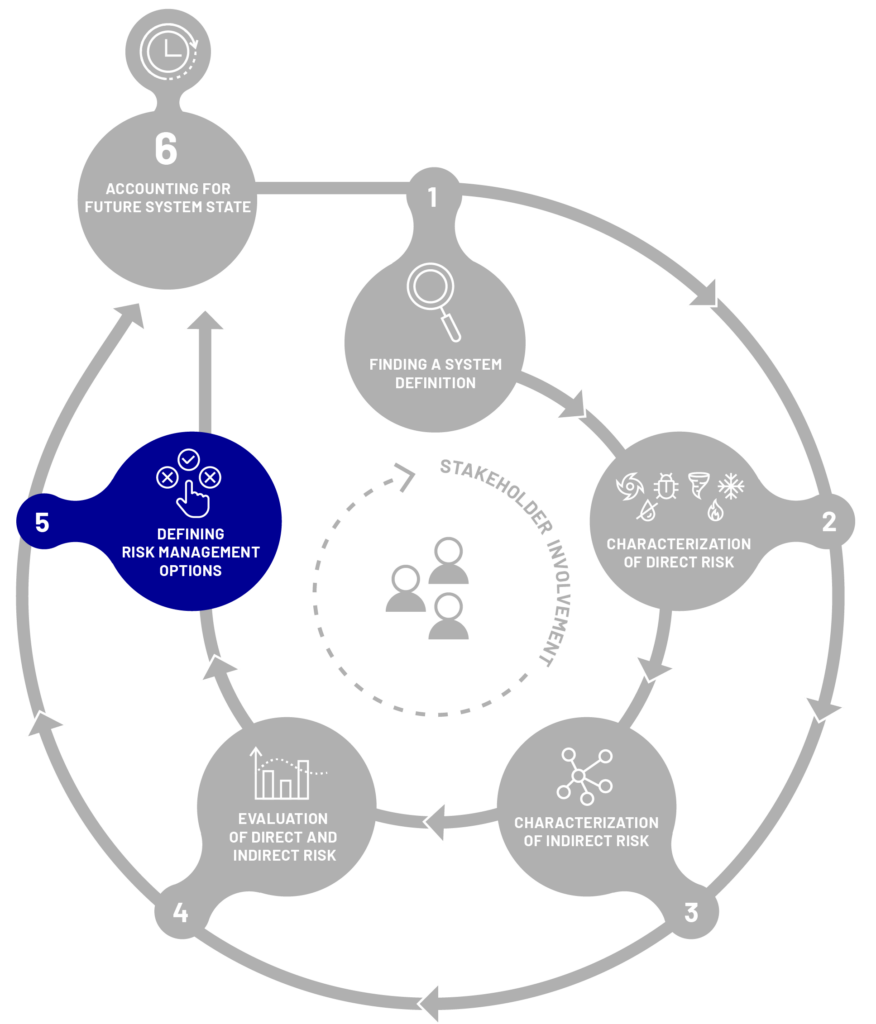Identifying risk management options
The goal of Step 5 is to come up with risk management options for direct and indirect risks selected to be managed in Step 4. In the context of multi-hazard risk management, a special emphasis in this step needs to be given to the consideration of synergies and asynergies in risk management measures for different hazards. In other words, measures considered can benefit risk reduction of different hazards, and also lead to situations where the introduction of a measure for one hazard increases risk in the context of a different hazard.

Guidance protocol questions
The following are questions that can help decision-makers, stakeholders, and relevant parties in successfully walking through step 5 of the framework. Consider this set of questions as an initial guide for your investigation, recognizing that it is not an exhaustive list.
Selection of risk management options
- What risk management options are available/needed for reducing the risks determined through the process of risk analysis and evaluation?
- What structural (e.g., physical infrastructure) and non-structural (e.g., land use policies, early warning systems) measures do you need to reduce your risks?
- Are the proposed risk management options risk-informed, precautionary or discursive? What are the uncertainties involved?
Implementation of risk management options
- What is the implementation process for risk management measures, including timelines, responsibilities, and costs?
- What time horizons do your risk management options align with? Are they tailored for short-term, medium-term, or longer-term durations?
- Did you include all stakeholders of interest in your system that would benefit from/be disadvantaged by risk management in the selection of these risk management options?
Critical reflection on risk management measures
- To what level do these measures reduce risks? Are there any residual risks left?
- In case you are considering a multi-hazard situation, what are synergies and asynergies between different risk management options? In the case of asynergies, are there any plans in place to manage these?
Also think about how risk management options might influence other sectors and systems:
- What is the level at which your risk management options are operating? Are the benefits derived only at the level of your system (e.g., in your sector, your administrative/geographical area) or are they wider and cascade across systems?
As in the previous steps of the framework, we are referring to the fictitious multi-hazard event in the Danube Region to exemplify the process of navigating through this stage of the framework. This serves as a practical illustration of how to approach this step and how to address the guidance protocol questions mentioned earlier, using our hypothetical scenario as a guide.
CONCEPTUAL EXAMPLE
There was a drought in the Danube Region (e.g. the 2015 or 2022 drought) that left severe consequences across sectors. After several months, the region is hit by a severe flood (e.g. the 2006 flood) causing severe loss and damage.
Examples of risk management options
- Reservoirs and land use management for drought and flood risk reduction
- subsurface flood water harvesting systems
- integrated early warning systems
- development of integrated policy risk management frameworks
- developing joint funds for multi-hazards and multi-risk management
- public-private partnerships
